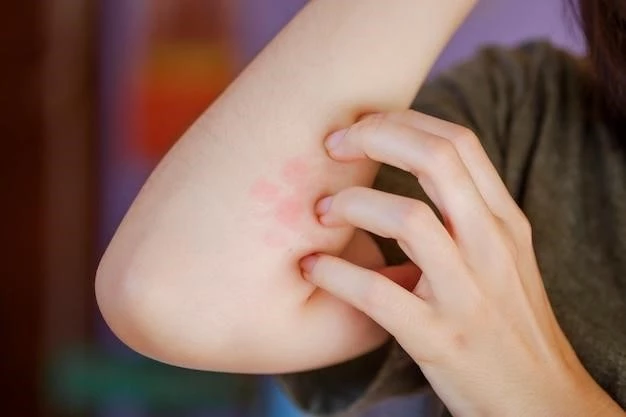Understanding Dermatomyositis Disease
When facing Dermatomyositis, knowledge is key to managing the condition effectively. This article aims to provide a comprehensive overview, from symptoms to treatments, empowering individuals with the tools needed to navigate this autoimmune disorder.
Introduction to Dermatomyositis
Dermatomyositis is a rare autoimmune disorder that affects the muscles and skin. It involves inflammation of the muscles (myositis) and skin changes. Individuals with dermatomyositis may experience muscle weakness, joint pain, rash, and fatigue. Understanding the symptoms and treatment options, such as physical therapy and medication, is crucial in managing this condition effectively. If you suspect you may have dermatomyositis, seek medical attention promptly for a proper diagnosis and personalized treatment plan.
Understanding the Cause of Dermatomyositis
The exact cause of dermatomyositis is not entirely understood, but it is believed to be an autoimmune disorder where the body’s immune system attacks its tissues. Factors such as genetics, infections, and environmental triggers may play a role in triggering dermatomyositis. Research is ongoing to uncover the precise mechanisms behind the development of this condition. If you have been diagnosed with dermatomyositis, it is essential to follow your healthcare provider’s recommendations and treatment plan to manage symptoms effectively. Remember, early detection and intervention are key in addressing the challenges associated with this complex autoimmune disorder.
Common Symptoms of Dermatomyositis
Dermatomyositis presents with a range of common symptoms that individuals may experience. These include muscle weakness, joint pain, rash, fatigue, and difficulty swallowing. Skin changes such as dermatitis and inflammation are also prevalent. If you are noticing any of these symptoms, it is crucial to consult a healthcare professional for an accurate diagnosis and appropriate treatment. Early recognition of these common symptoms can lead to better management of dermatomyositis and improved quality of life.
Less Common Symptoms of Dermatomyositis
In addition to the more common symptoms of dermatomyositis, there are less common manifestations that individuals may experience. These can include fever, myositis (muscle inflammation), and specific skin changes. While less frequent, these symptoms can still impact daily life and overall well-being. It is important to communicate any unusual or new symptoms to your healthcare provider to ensure comprehensive management of dermatomyositis. Monitoring and addressing both common and less common symptoms are essential in effectively managing this complex autoimmune disorder.
Diagnosis of Dermatomyositis
Diagnosing dermatomyositis involves a combination of medical history review, physical examination, blood tests to check for specific antibodies related to the condition, and imaging studies such as MRI or muscle biopsy. A dermatologist, rheumatologist, or neurologist may be involved in the diagnostic process. It is essential to collaborate closely with healthcare professionals to ensure an accurate diagnosis. Early detection is key in initiating a suitable treatment plan aimed at managing symptoms and improving quality of life for individuals with dermatomyositis.
Treatment Options for Dermatomyositis
Managing dermatomyositis typically involves a multidisciplinary approach. Treatment options may include the use of medications such as corticosteroids, immunosuppressants, or biologics to control inflammation and immune response. Physical therapy plays a crucial role in maintaining muscle strength and mobility. Additionally, lifestyle modifications, such as protecting the skin from UV exposure and maintaining a balanced diet, can support overall well-being. It is vital to work closely with a healthcare team to tailor a treatment plan that addresses individual needs and promotes long-term management of dermatomyositis.
Lifestyle Changes for Managing Dermatomyositis
Adopting certain lifestyle changes can complement medical treatment in managing dermatomyositis. Protecting the skin from sun exposure by using sunscreen and wearing protective clothing can help prevent flare-ups. Eating a balanced diet rich in nutrients can support overall health and strengthen the immune system. Engaging in regular physical activity as tolerated can help maintain muscle strength and flexibility. Managing stress levels through relaxation techniques or activities you enjoy is also beneficial. Consulting with healthcare providers can guide you in making lifestyle adjustments that promote well-being while living with dermatomyositis.
Coping with Dermatomyositis
Coping with dermatomyositis can be challenging, but there are strategies to help navigate the journey. Building a support network of family, friends, or support groups can provide emotional support and understanding. Engaging in activities that bring joy and relaxation can help alleviate stress and improve mental well-being. Setting realistic goals and priorities, pacing yourself, and seeking assistance when needed are essential in managing daily activities. Educating yourself about the condition and staying proactive in your care can empower you in dealing with dermatomyositis. Remember, you are not alone, and there are resources available to support you along the way.
Research and Developments in Dermatomyositis
Ongoing research in dermatomyositis focuses on advancing understanding of the underlying mechanisms of the condition, improving diagnostic tools, and developing innovative treatment strategies. Clinical trials may offer opportunities to explore new therapies and interventions for dermatomyositis. Staying informed about the latest research findings and advancements can provide insights into emerging treatments and potential breakthroughs. Engaging with healthcare professionals and research studies can contribute to improved outcomes and quality of life for individuals living with dermatomyositis. Keeping abreast of developments in the field can empower you to make informed decisions about your care.
Prevention Strategies for Dermatomyositis
As dermatomyositis is an autoimmune disorder with complex causes, specific prevention strategies are not yet well-defined. However, certain lifestyle choices may potentially help reduce the risk of developing autoimmune conditions. Maintaining a healthy diet, regular exercise routine, and managing stress levels can support overall immune system health. Avoiding known triggers such as excessive sun exposure or certain infections may also be beneficial. While prevention of dermatomyositis may not be entirely within your control, adopting a healthy lifestyle and staying informed about potential risk factors can contribute to overall well-being and possibly lower the risk of autoimmune disorders.
Complications of Dermatomyositis
Dermatomyositis can lead to various complications that may impact different areas of the body. Some individuals with dermatomyositis may experience complications such as interstitial lung disease, arthritis, or gastrointestinal issues. In severe cases, there may be complications involving the heart or lungs. Regular monitoring by healthcare providers can help identify and address potential complications early on. Understanding the possible complications associated with dermatomyositis and staying proactive in managing the condition can contribute to better outcomes and quality of life. Consult with your healthcare team to address any concerns and develop a comprehensive care plan tailored to your individual needs.
Expert Insights on Dermatomyositis
Experts in dermatomyositis specialize in understanding the complexities of this condition and its impact on individuals. They provide valuable insights into the latest treatment options, research advancements, and management strategies. Seeking guidance from healthcare professionals with expertise in dermatomyositis can offer personalized care and support tailored to your specific needs. These experts can help navigate the challenges of living with dermatomyositis, provide up-to-date information on the condition, and guide you in making informed decisions regarding your health. Don’t hesitate to consult with dermatomyositis specialists for comprehensive care and expert advice.

Personal Stories and Experiences with Dermatomyositis
Hearing personal stories and experiences from individuals living with dermatomyositis can provide valuable insights and emotional support. By sharing their journeys, challenges, and triumphs, those affected by dermatomyositis offer encouragement and solidarity to others facing similar struggles. These narratives can shed light on the day-to-day realities of living with the condition, coping strategies, and resilience. Connecting with support groups, online communities, or participating in advocacy initiatives can help individuals with dermatomyositis feel understood and empowered. Remember, you are not alone in your journey, and sharing experiences can foster a sense of community and inspire hope.
Conclusion⁚ Empowering Individuals with Dermatomyositis
In conclusion, dermatomyositis can present challenges, but with the right knowledge, support, and proactive management, individuals can lead fulfilling lives. By staying informed about the condition, working closely with healthcare professionals, and adopting healthy lifestyle practices, those affected by dermatomyositis can enhance their quality of life. Remember to prioritize self-care, seek support from loved ones and medical experts, and stay positive on your journey. Empower yourself by advocating for your needs, staying engaged in your treatment plan, and maintaining a hopeful outlook. You are resilient, and with the right resources and mindset, you can navigate the complexities of dermatomyositis with strength and determination.
